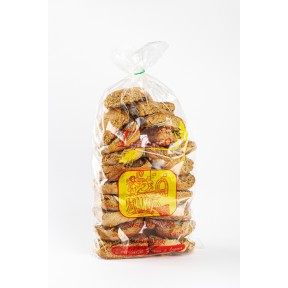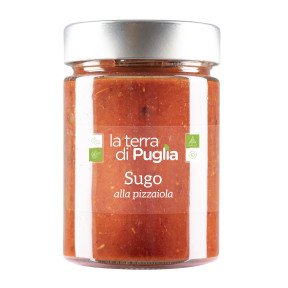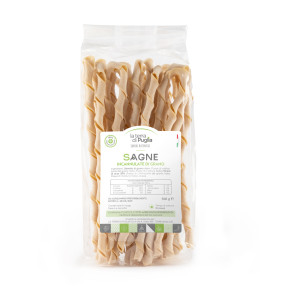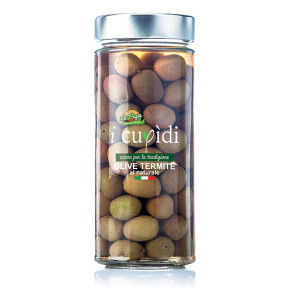The History of Tria di Grano
Tria is a type of Puglian pasta extruded through bronze dies. The history of this pasta shape is very ancient. The term “Tria” derives from the Arabic word “Ytria” and refers to dry pasta, similar to a tagliatella with a width of about 2 cm. The optimal seasoning is certainly with legumes, especially chickpeas. The dish Ciceri e Tria is a famous traditional recipe throughout Puglia.
What is Tria?
"Tria," a word derived from the Arabic "ittrya" meaning fried (or dry) pasta, is often served with "ciceri," chickpeas. This pasta shape is frequently associated with Puglian cuisine, where it is prepared in various ways, using both canned chickpeas and fresh chickpeas.
Ciceri e Tria: A Puglian Classic
Ciceri e Tria is a Puglian recipe that combines dry pasta with chickpeas, creating a rich and nutritious dish. The main ingredients of Ciceri e Tria include tria and chickpeas, which can be either fresh or canned. This dish can also be prepared using a Bimby, making the preparation even simpler and faster.
Recipe Variations
One of the most well-known variations is Pasta e ceci alla leccese, which adds a special touch to the traditional recipe. Another variation is Pasta e ceci alla pugliese, which emphasizes the use of local and fresh ingredients. Both versions maintain the simplicity and goodness of the original recipe.
Tria di Grano: A Culinary Heritage
Tria di Grano is more than just a type of pasta; it is a true heritage of Puglian cuisine. Its versatility allows for the creation of delicious and nutritious dishes, respecting the region's culinary traditions. Ciceri e Tria, with its combination of simple yet rich flavors, best represents Puglian cuisine.
In conclusion, Tria di Grano is not just a pasta shape but a fundamental element of Puglian culinary culture, capable of telling stories of ancient traditions and flavors. Whether prepared traditionally or with modern variations, it remains a beloved and appreciated dish throughout the region and beyond.




















